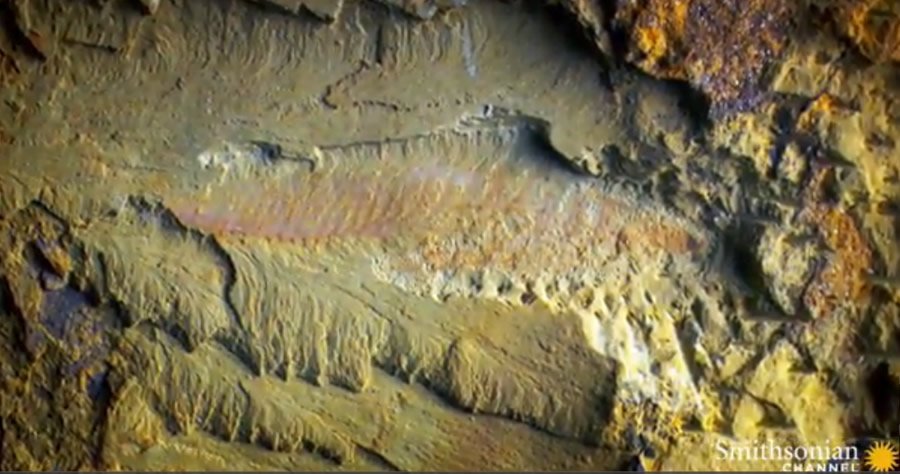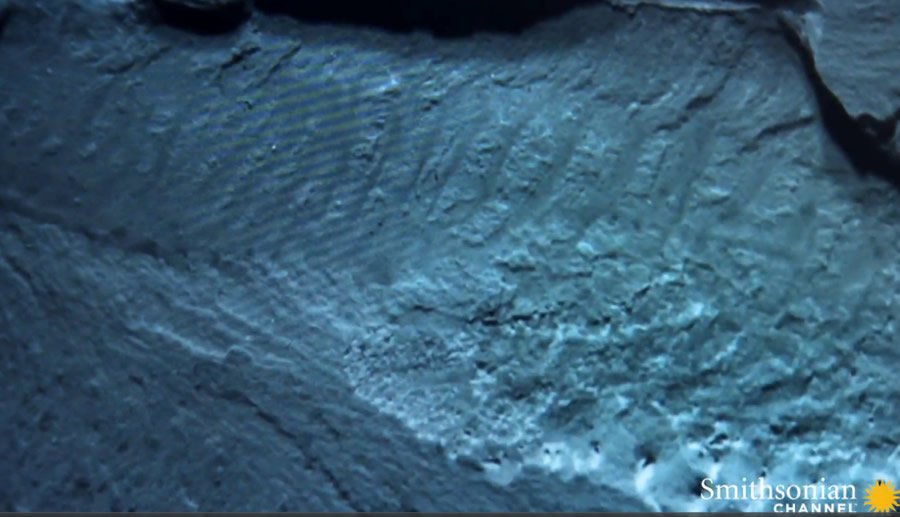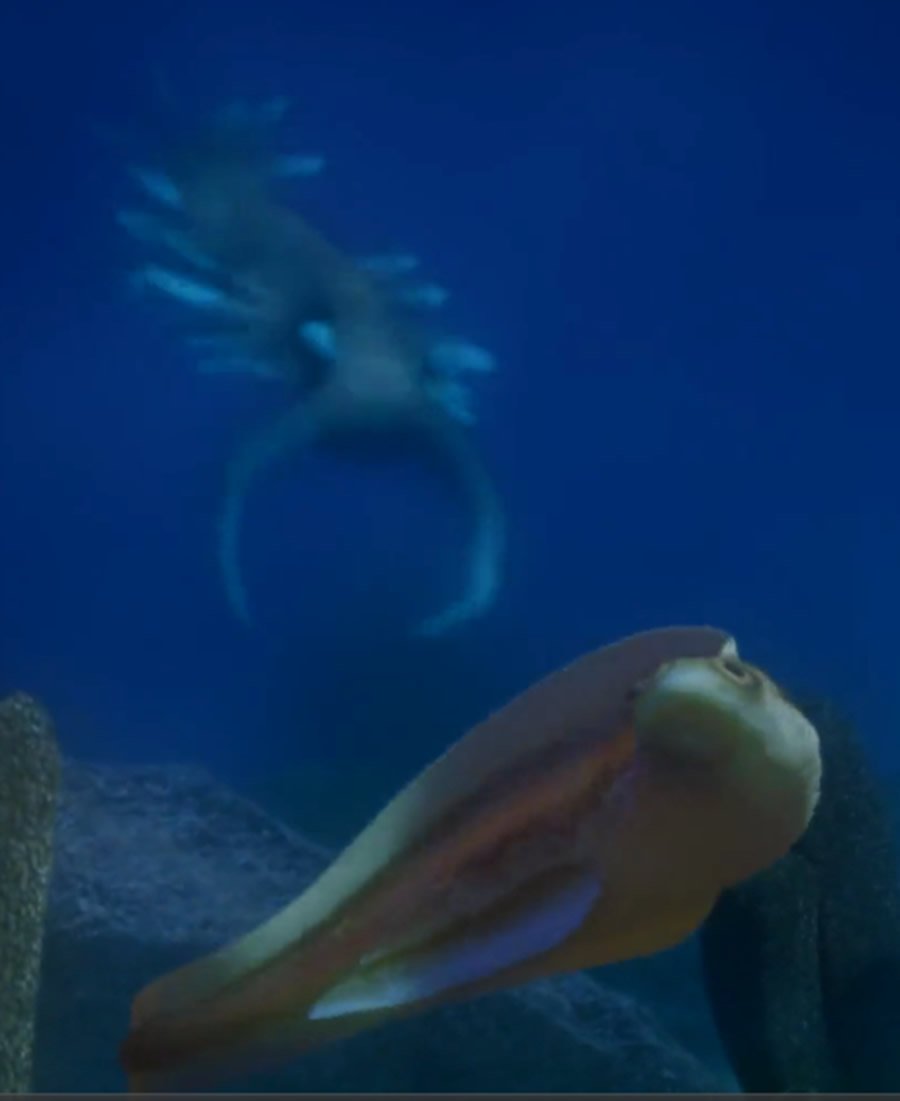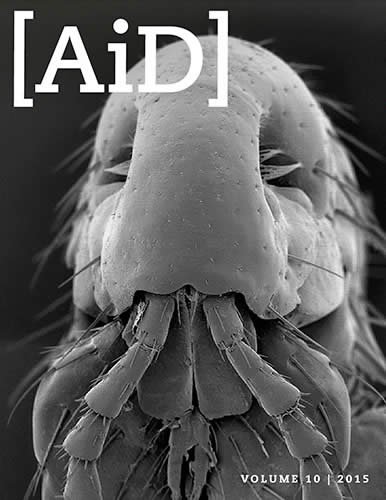
Cambrian Explosion or Creation Week—Key to Vertebrate Success?
News to Know
Abstract
Does the Cambrian explosion mark the beginning of the catastrophic global Flood or the beginning of vertebrate evolution?
News Source
- Smithsonian.com: “When Did Our Backbones First Appear?”
The evolutionary origin of vertebrates 525 million years ago is the subject of a captivating video recently featured on Smithsonian.com.1 In this lavishly illustrated five-minute clip, charismatic evolutionary spokesman David Attenborough explains how a paper clip-sized Cambrian creature called Myllokunmingia has revealed how and when life took its first successful step toward the development of a backbone.
To discover when the first sign of a backbone appeared, Sir David takes us to China’s Chengjiang Formation where Myllokunmingia—which he says is “the earliest creature we know of that we can truly call a vertebrate”—was found in a Lower Cambrian rock layer. China’s Chengjiang Formation and Canada’s Burgess Shale are two famous sites revealing the Cambrian explosion—the abrupt appearance of diverse animals deep in the fossil record.

Myllokunmingia, discovered in China’s Lower Cambrian Chengjiang Formation, is considered the earliest vertebrate in the fossil record. It is only an inch long, and it had many features that, from the evolutionary point of view, were surprisingly advanced considering its “early” place in the fossil record.

Its well-preserved soft tissues include bands of muscle tissue with the same zigzag arrangement seen in modern fish. These muscles, arranged alongside a rod-like notochord, probably helped it swim efficiently with an undulating pattern.

David Attenborough explains that this revolutionary, newly evolved way of moving helped Myllokunmingia evade invertebrate predators (Myllokunmingia reconstruction in front) with which it shared the world 525 million years ago.
Images via Smithsonian.2
Why a Vertebrate?
After showing several representatives of the 200+ species of invertebrates whose soft body parts are fossilized in the Cambrian Chengjiang Formation, Attenborough turns his attention to the well-preserved features of Myllokunmingia. This presumed entry-level vertebrate had a rigid internal notochord to support it rather than a backbone. Sir David points to its head with gill pouches and also to two eye spots, which he notes are present on "nearly every one” of these fossils.3 He shows the gill bars that would have held blood vessels collecting oxygen from the gills. And he points out the bands of muscles lined up along the notochord, which, he claims on the basis of his evolutionary worldview, was “the forerunner of the backbone.”
The word notochord refers to a rod supporting the central nerve cord in some unusual living creatures like the lancelet (an eel-like marine worm), as well as in extinct ones like the eel-like Pikaia, and the recently described Cambrian cartilaginous fish Metaspriggina, both assigned dates of about 505 million years. Notochord also refers to a rod that functions like a placeholder for vertebral bones in vertebrate embryos.
Sir David shows how segments of muscles attached to the notochord could make it undulate through the water “in a revolutionary new way to get around.” While animated footage shows the intrepid vertebrate victoriously evading predatory invertebrates that shared its Cambrian waters, he suggests that Myllokunmingia‘s innovative method of locomotion equipped it to survive so its descendants could evolve into us.
The only one of its species to be found thus far, the Cambrian fish featured in the video, Myllokunmingia fengjiaoa, was reported in Nature in 1999, along with a similar fish recovered nearby, Haikouichthys ercaicunensi. Both were cartilaginous agnathans—jawless fish resembling lampreys. Though quite similar, Haikouichthys is considered more advanced because it had a bit more in common with modern lampreys than Myllokunmingia did, the evolutionary view being that Myllokunmingia evolved prior to the divergence of the branch leading to lampreys.4
Furthermore, though these ancient agnathans reportedly predate other vertebrates by 20 to 50 million years and had a muscle-lined rod rather than vertebrae for internal support and locomotion,5 they had their share of surprisingly modern features. Their fossils reveal paired fins. Their gills were more advanced than the slits seen in many invertebrates.6 As additional specimens of Haikouichthys (now considered by some a “myllokunmingid”) confirm, these Lower Cambrian vertebrates had complex cartilaginous skulls with sense organs for sight, smell, and possibly hearing, suggesting they had brains comparable to modern agnathans.7 And like Metaspriggina, alongside the notochord they had the same zigzag arrangement of muscles seen in modern fish.
In “Catching the First Fish,” Paleontologist Philippe Janvier of the National Museum of Natural History in Paris summed up the reasons for considering Myllokunmingia and Haikouichthys vertebrates even though they lack backbones per se:
The two new fossils described by Shu et al. from Chengjiang are the most convincing Early Cambrian vertebrates ever found. With their zigzag-shaped muscle blocks, relatively complex and presumably cartilaginous skull, gill arches, heart, and fin supports, these fish resemble the larvae of living lampreys. One detail, however, is at odds with what we know about vertebrates: the peculiar, forward tilt of the endoskeletal rays of the dorsal fin, which contrasts with the backward tilt of these fin rays in most fishes. Whether this is due to distortion or not awaits confirmation. Surprisingly, these animals seem to have long, ribbon-shaped, paired fins, which were thought to have appeared later in vertebrate history, after the divergence of lampreys.8
Vertebrates in the Cambrian
“When Did Our Backbones First Appear?” is part of a larger series, David Attenborough’s Rise of Animals: Triumph of the Vertebrates. Produced by the BBC, it originally aired in 2013 and was later released on DVD. The discovery of these two fish was of great importance—sufficient to merit re-running video about it 16 years later—because it demonstrated that vertebrates were part of the Cambrian explosion.9
Janvier explained the significance of the discovery from the evolutionary point of view:
It’s important because up to now the vertebrates were absent from the big bang of life, as we call it—that is, the great early Cambrian explosion, where all the major animal groups appeared suddenly in the fossil record.10
Science News writer Richard Monastersky, also commenting on the report, captured its momentous significance for the evolutionary timeline:
Paleontologists have long regarded vertebrates as latecomers who straggled into evolutionary history after much of the initial sound and fury had fizzled. Chinese paleontologists, however, have discovered fossils of two fish that push the origin of vertebrates back to the riotous biological bash when almost all other animal groups emerged in the geologic record.
Preserved in 530-million-year-old rocks from Yunnan province, the paper clip-size impressions record the earliest known fish, which predate the next-oldest vertebrates by at least 30 million years.11
The seemingly sudden appearance of so many different kinds of animals at the same time in the fossil record without a similar bumper crop of simpler transitional forms leading up to them is, however, an evolutionary conundrum. The authors of the study describing Myllokunmingia and its fellow traveler wrote, “These discoveries significantly predate previously published reports, but they also imply that even more primitive vertebrates had evolved before the mid-Lower Cambrian.”12 Since vertebrates are considered an evolutionary advance on invertebrates, the concurrent occurrence of two different vertebrate species so early in the history of life is a problem. If evolution really happened, how could vertebrates have not only evolved so early but also diversified so fast?
The discovery of these vertebrates in Lower Cambrian rock begs the question of how such advanced creatures could have evolved and even diversified so early in the history of life without leaving any trace of their evolutionary path deeper in the fossil record. Of course, no one would suggest that the fossil record is a complete record of all life on Earth. Nevertheless, the fact that such an abundance of animals with exquisitely preserved soft tissue is found in Cambrian deposits at locations around the globe makes the claim that their evolutionary ancestors were simply not preserved harder and harder to swallow.
Buried Alive
Indeed, in the video, David Attenborough points out that it is “something of a mystery” how soft body parts of dead marine animals in the Chengjiang Formation were preserved at all because bacteria would normally destroy a marine animal like this long before it could be preserved. The authors describing Myllokunmingia observed that its position within the sediment encasing it may explain how it was so well preserved. They wrote, “One consequence of burial is that the tail has been bent steeply into the sediment, so that the posteriormost section is not visible. This configuration, and what appears to be sediment in the pharynx, suggest that the animal was buried alive.”13
“Buried alive” is the operative phrase here. For soft tissues to be preserved in abundance in the Cambrian explosion, something catastrophic must have happened to bury not just a few isolated animals but billions. Soft tissue preservation on such a scale demands a massive catastrophic burial. What could have happened?
To make sense of the Cambrian explosion we need to first divest the fossil record of the millions-of-years labels attached to it. Those dates are assigned by scientists who cling to unverifiable worldview-based assumptions and interpret dating methods accordingly. We can best understand the significance of fossils like Myllokunmingia in the context of the history of life on Earth as understood from the eyewitness account God provided in the Bible.
God created all kinds of living things about 6,000 years ago and, as we infer from Genesis 1, designed them to vary and reproduce only within their created kinds. Biological observations confirm that living things do just that, not evolve into new, more complex kinds of organisms. Thus the fossil record is a record of the order in which many organisms were catastrophically buried, not a timeline revealing the Darwinian order in which living things evolved increasing complexity through natural processes.
Cambrian Explosion
The Cambrian explosion is well named. Below, Precambrian sedimentary rock layers contain only the sparsest of fossils—microfossils of bacteria, the structures built by bacteria (called stromatolites), and tiny sponges, for instance. But above them Cambrian sedimentary layers reveal a veritable explosion of life forms, a diverse collection that, with discovery of Myllokunmingia and Haikouichthys, was finally found to include vertebrates. It is fitting that Sir David and Smithsonian.com call attention to this extinct vertebrate preserved so well so deep in the fossil record, but from it they teach the wrong lessons. The lesson is not about the evolution of life but about catastrophic death. In Myllokunmingia we see not a distant human ancestor but instead one of billions of animals that were buried as a result of God’s judgment upon the overwhelming wickedness of mankind.
The Precambrian sedimentary rock layers are remnants of pre-Flood sedimentary rocks. However, the Cambrian explosion preserves a record of the sudden burial and death of countless organisms that likely lived in the shallow seas adjacent to the pre-Flood supercontinent suddenly disrupted by the onset of the global Flood recounted in Genesis 6 through 9.14 As the lowest fossil-rich sedimentary layers in the geological record, these Cambrian layers represent the first major sedimentary product of the biblical Flood.
The plethora of soft body parts preserved in many Cambrian fossil beds demands a history of rapid burial on a massive scale. And from the Bible we know that the Noahic floodwaters came not just from rain but also from the opening of the “fountains of the great deep” (Genesis 7:11), an apparent reference to violent undersea activity. The first habitats and ecosystems to be destroyed and buried atop the “Precambrian” rock layers of the pre-Flood world would have been those on the seabeds, where upheavals would have suddenly buried countless undersea organisms.
Thus, while diverse marine invertebrates form the dominant population preserved in Cambrian rocks, the first sedimentary layers laid down by the global Flood, it is no surprise to a creationist to find occasional marine vertebrates among them. Subsequent burials of organisms as the waters rose higher would have deposited layer after layer of sedimentary rock, creating much of the fossil record not over millions of years, but early in the Flood year.
Myllokunmingia, like the billions of other animals buried in Cambrian rocks, was descended from—not evolved from—animals of the same kind created by God during the Creation Week, less than 2,000 years before the global Flood remodeled the Earth’s surface. Like the rest of the animals in the Cambrian explosion, the Lower Cambrian vertebrates in the video do not, despite advertised claims, chart “the ancient origins of the very first vertebrates”15 and reveal “the key advances [vertebrates] developed over 500 million years to help them master the seas, colonize the land and take to the skies.”16 Myllokunmingia doesn’t reveal anything about how evolution happened but instead illustrates exactly what we would expect to find in light of the history of Creation and the global Flood presented in the Bible.
Further Reading:
- Jaw-Dropping Discovery in the Burgess Shale
- Common Ancestor Hidden in Burgess Shale
- Burgess Shale’s Cambrian Fossils Should Change Our View of Evolution
- Canada’s New Cambrian Explosion: Burgess Shale Chapter Two
- Cambrian Explosion Was the Culmination of Cascading Causes, Evolutionists Claim.
- One: Life’s Unexpected Explosion
- Cambrian Arthropod Had Legs on Its Head
- Cambrian Invertebrate with Neural Complexity Similar to Modern Insects
- Lamprey Larval Cough Clue to Evolutionary Origin of Breathing
- Local Laboratory Restores Trilobite Fossils
- Researchers Devise Alternate Theory For Cambrian Explosion
- Doesn’t the Order of Fossils in the Rock Record Favor Long Ages?
For More Information: Get Answers
Remember, if you see a news story that might merit some attention, let us know about it! (Note: if the story originates from the Associated Press, FOX News, MSNBC, the New York Times, or another major national media outlet, we will most likely have already heard about it.) And thanks to all of our readers who have submitted great news tips to us. If you didn’t catch all the latest News to Know, why not take a look to see what you’ve missed?
(Please note that links will take you directly to the source. Answers in Genesis is not responsible for content on the websites to which we refer. For more information, please see our Privacy Policy.)
Footnotes
- “When Did Our Backbones First Appear?” Smithsonian (video), http://www.smithsonianmag.com/videos/category/science/when-did-our-backbones-first-appear/.
- Ibid.
-
In the video, Attenborough says, “It’s a fossil called Myllokunmingia. Its features reveal evidence of a new type of support, not outside of the body, but inside. Under the microscope it contains [an] extraordinary amount of detail. This [pointing to the magnified image] is the animal itself, its head, the top of its back, and nearly every one of them have these two little black spots at the front—eyespots.” But since only one Myllokunmingia fossil has ever been found, we had to wonder just what he meant.
The 1999 study (D-G. Shu et al., “Lower Cambrian Vertebrates from South China,” Nature 402 [November 4, 1999]: 42–46, doi:10.1038/46965) reported the discovery of Myllokunmingia and another very similar Chengjiang fossil called Haikouichthys. They were found at separate locations, and Myllokunmingia came from a “slightly higher stratigraphic level within the Qiongzhusi Formation” (D-G. Shu et al., “Head and Backbone of the Early Cambrian Vertebrate Haikouichthys,” Nature 421 [January 30, 2003]:526–529, doi:10.1038/nature01264). Comparing the two fossils, the authors note the “most obvious differences from Haikouichthys are possession of fewer gill pouches (five or six), absence of curved branchial supports, the presence of possible exhalant chambers, and a more anterior extension of the dorsal fin that lacks obvious fin rays” (Shu et al., Nature 2003). They had mineralized regions on the head suspected of being eyes (Shu et al., Nature 1999).
While only one Myllokunmingia fossil has been reported, many more Haikouichthys have since been discovered, and they definitely have eyes (Shu et al., Nature 2003); therefore, it is now understood that the suspected eyes in the original Myllokunmingia fossil really are eyes. In the video, Attenborough spoke of Myllokunmingia, which Shu regarded as the more primitive of the two species (Shu et al., Nature 1999). Since the species are so similar, “myllokunmingids,”—a designation that includes both along with the more recently discovered Zhongjianichthys—are now all considered to have “paired nasal capsules, large lateral eyes, and, possibly, paired otic capsules, all of which suggest that they may have possessed brains comparable with living agnathan vertebrates” (R. Glenn Northcutt in In the Light of Evolution: Volume VI: Brain and Behavior, Georg F. Striedter et al,. eds. [Washington, DC: National Academies Press, 2013], 44).
Perhaps for purposes of the video Sir David fudged a bit, blurring the distinction between the two species and treating all the Chengjiang vertebrates as if they were all Myllokunmingia when he really meant they were “myllokunmingids.” Regardless, the point remains that these vertebrates found so deep in the fossil record are equipped with sensory organs comparable to those of modern agnathans, making the evolutionary saga ever more unbelievable. Furthermore, their ubiquitous preservation in these fossils demands a history of rapid catastrophic burial, such as occurred with the onset of the biblical global Flood.
- Shu et al., “Lower Cambrian Vertebrates from South China.”
- “These agnathan vertebrates predate previous records by at least 20 and possibly 50 Myr. . . . The differences between Haikouichthys and Myllokunmingia indicate that, by Chengjiang times, there may already have been a diversity of forms.” From Shu et al., “Lower Cambrian Vertebrates from South China.”
- Shu et al. reported that the Myllokunmingia fossil preserved anatomy consistent with gill pouches and corresponding extrabranchial atria, anatomy demonstrably more complex than the gill slits seen in Amphioxus, a filter-feeding invertebrate of very simple brain that evolutionists consider a living model of a hypothetical ancestor of vertebrates. (Read more about it in “Review: Your Inner Monkey.”)
- “Two genera, Haikouichthys and Myllokunmingia, have been described as agnathan vertebrates, with Haikouicthys said to be closely allied to living lampreys and Myllokunmingia said to be closely allied to living hagfishes (Shu et al., 1999). However, it has been claimed that this interpretation is based on tenuous characters and that both taxa may form a clade (myllokunmingids) that is basal to living craniates (Janvier, 2003, 2008). Subsequently, another described genus, Zhongjianichthys, seems to be a myllokunmingid (Shu, 2003). In any case, these taxa seem to have had paired nasal capsules, large lateral eyes, and, possibly, paired otic capsules, all of which suggest that they may have possessed brains comparable with living agnathan vertebrates” (Northcutt, In the Light of Evolution, 44.)
- Philippi Janvier, “Catching the First Fish,” Nature 402 (November 4, 1999): 21–22, doi:10.1038/46909.
- Another Cambrian animal, Pikaia, found in the Burgess Shales, is also considered by some to be a vertebrate; however, Pikaia’s assigned age of 505 million years is much “younger” than Myllokunmingia. Read more about it in “Common Ancestor Hidden in Burgess Shale” and “Burgess Shale’s Cambrian Fossils Should Change Our View of Evolution.”
- Richard Monastersky, "Waking Up to the Dawn of Vertebrates," Science News 156, no. 19 (November 6, 1999): 292, doi:10.2307/4011885.
- Ibid.
- Shu et al., “Lower Cambrian Vertebrates from South China” (emphasis added).
- Ibid.
- Answers in Genesis geologist Dr. Andrew Snelling explains, “The Cambrian fossilized creatures lived prolifically on the wide shallow sea floor surrounding the pre-Flood supercontinent.” We infer from the fossil record that the creatures preserved in the Cambrian explosion “were picked up and buried by the rising violent ocean waters as they swept up onto the broken up continental fragments.”
- “When Did Our Backbones First Appear?”
- Ibid.
Recommended Resources

Answers in Genesis is an apologetics ministry, dedicated to helping Christians defend their faith and proclaim the good news of Jesus Christ.
- Customer Service 800.778.3390
- Available Monday–Friday | 9 AM–5 PM ET
- © 2025 Answers in Genesis



